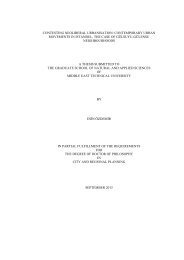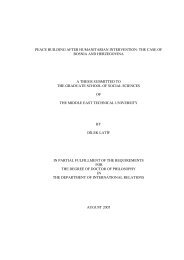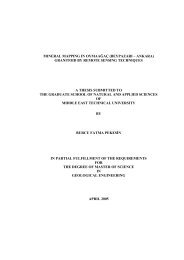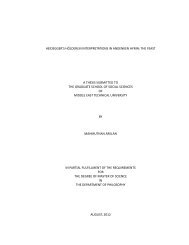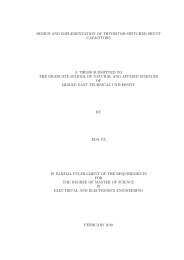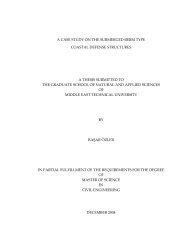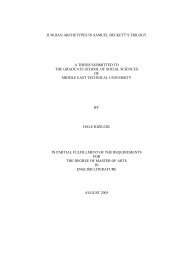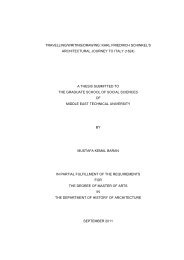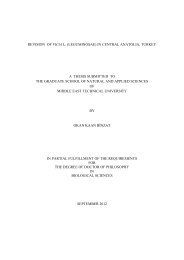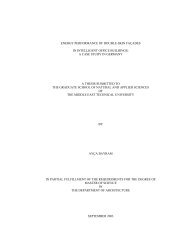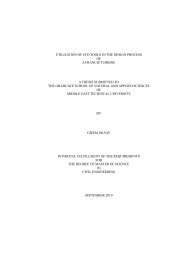View Original - Middle East Technical University
View Original - Middle East Technical University
View Original - Middle East Technical University
You also want an ePaper? Increase the reach of your titles
YUMPU automatically turns print PDFs into web optimized ePapers that Google loves.
compatibility after being established ... [this] is fairly improbable when one considers<br />
the five institutional forms put forward by régulation theory, but it is possible, even<br />
frequent, as one gradually breaks down the level of analysis, since structural<br />
constraints are mediated through a whole series of institutions and intermediary<br />
adjustment mechanisms’(2000:287). To that effect, Boyer is still for the ‘inclusive’ as<br />
in the ‘social compatibility of compromises’ but institutional economics outside the<br />
regulation theory is much more the votary of a ‘tight relationship between the analysis<br />
of complementarity and the areas of the economy which are investigated’(Amable<br />
2000:668).<br />
Boyer’s regulation theory is very much a middle-range theory; that is, it is an analysis<br />
of the ongoing ‘cumulative changes’ at the level of the structural forms. Although this<br />
would ‘provide a good reference point for dialogue among different middle-range<br />
theoretical approaches’, regulation theory no longer studies the structural forms as the<br />
‘mode of cohesion of the basic social forms’ which are intrinsically contradictory.<br />
Increasingly implicit in such a middle-range analysis is the argument that crises,<br />
tendencially or otherwise, are the consequence of ‘institutional failure, institutional<br />
mismatch, or ineptitude in institutional learning’(Jessop 2005:37). In contrast, Jessop<br />
argues that a theory of institutional complementarity and hierarchy, either en<br />
régulation or en crisis, must ‘lead back to a more fundamental analysis of forms of the<br />
capital relation and their logic than second- and third-generation regulationist studies<br />
usually provide with their mainly middle-range institutional theorization’(2006:228).<br />
One other dark consequence of this ‘middle-range institutional theorization’, for<br />
Jessop is that regulation theory ‘is equated with the analysis of social embeddedness,<br />
with the social dimensions of MoRs and with the extra-economic dimensions of<br />
capitalism’. That is to say, structural forms are not elusively inclusive but these are<br />
increasingly and single-handedly institutionally inclusive as opposed to integrally<br />
inclusive when ‘subsumed under the category of ‘market’ coordination and attention<br />
is focused on non-market forms of coordination’ as in Boyer’s research on<br />
governance(ibid.:244).<br />
92



